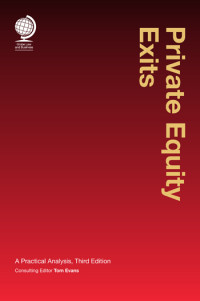
Consulting editor(s): Tom Evans - Latham & Watkins
Publication date: Jan 2022
Format: Hardback
Pages: 248
Price: £180.00
ISBN: 9781787424906
How our eBook platform works
How permanent access, multi-user eBooks work
Add to basket (UK and Europe)Click to buy (USA, rest of world)
Add to basket (UK and Europe)Click to buy (USA, rest of world)
Exits are the lifeblood of private equity: for private equity investors, at the top of their list of priorities when making an investment is an understanding of when and how they will realise it in due course. The methods of exiting private equity investments have developed over the years, and particularly as a result of the hyper-competitive market for quality assets and disruption caused by global macro-economic events such as the novel coronavirus pandemic.
To the usual trade sales and initial public offerings (IPOs) have been added secondary, tertiary (and more) buy-outs, refinancings, partial sales, private equity house spin-outs, liquidations and an increasing number of “fund-to-fund” transfers. In these uncertain times, private equity houses will continue to put a significant focus on what options might be available to them to realise their portfolio investments, being mindful of not just the economic risks, but also the legal, tax, regulatory and reputational issues at stake. Management teams are key to this process and their economic, commercial and personal priorities cannot be underestimated in what is a very complex environment of often conflicting aspirations.
This practical guide features contributions by leading specialists (including from Latham & Watkins, Linklaters, Macfarlanes and Ropes & Gray) on a range of topics linked to the exit of private equity investments. Topics featured include vendor diligence, management issues, auction sales, partial exits, private equity house spin-outs, IPOs, refinancing, winding-up, tax and perspectives from Luxembourg, the US and views on the emerging markets.
The third edition also includes analysis on emerging and established trends impacting exit terms, including early management liquidity, the prevalence of insurance solutions and related party or fund-to-fund exits.
Together, the contributors provide an invaluable guide to the legal, regulatory, tax and practical elements in play. Whether you are a lawyer in private practice or in-house, this commercially focused title will provide you with an invaluable all-round overview of private equity exits.







